The great number of islands that make up the Penghu archipelago make it a fascinating place to come back and explore again and again. On your next trip to Penghu, why not get off the beaten path and explore a lesser-traveled outlying island?
Jibei Island (吉貝嶼) in Baisha Township (白沙鄉) is a popular destination for its long white sand beach and water activities. However, three other permanently inhabited islands in the township put a unique spin on the traditional Penghu charm, making them great destinations for the curious tourist: Yuanbeiyu (員貝嶼), Niaoyu (鳥嶼) and Dacangyu (大倉嶼).
YUANBEIYU

Photo: Tyler Cottenie
Citou Wharf (岐頭碼頭) connects the mainland of Baisha Township to two outlying islands, the nearest of which is Yuanbeiyu (員貝嶼). The highlight of a self-guided visit here is the clifftop scenery, best appreciated through a walk around the island. The full loop is only around 2km, so a couple of hours is plenty.
After getting off the ferry, you can explore the village first, which is the typical Penghu mix of modern concrete and traditional coral buildings, some well-kept, some fully abandoned, and many lying somewhere in between. At the far eastern edge of the village is the island’s only swimmable beach. This tiny stretch of sand backed by a columnar basalt cliff is quite photogenic, but it can be crowded if you visit when the nearby tour operator has guests out on kayaks and stand-up paddleboards.
A single concrete path behind the village leads up to the highlands beyond. If you walk the right way toward this path, you’ll pass a strange sight along the way: a shrine about one meter high blocking traffic in the middle of a village road.
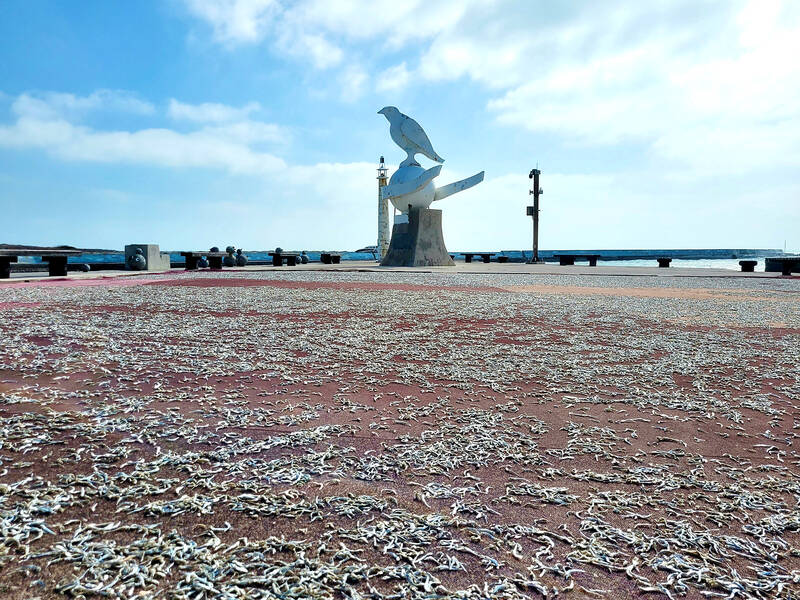
Photo: Tyler Cottenie
The highland path around the island features two pavilions for shade and excellent ocean views from the top of crumbling basalt cliffs. Some manmade objects add a flourish to the walk: small grey statues of oyster-shell-based concrete decorated with old aluminum cans, faded cigarette lighters, and other ocean refuse. These were installed as exhibits for the 2023 Penghu Marine Debris Art Festival.
Along the north shore is the landing site for a high-voltage undersea electrical cable. Unlike some other outlying islands that rely on a noisy generator for power, Niaoyu gets its power directly from the main island.
The final stop in a counterclockwise loop of the island is the former elementary school, which was saved from ruin and transformed into a center for tourism. There is a shop with indoor seating selling drinks and snacks, oceanfront accommodations and a variety of activities on offer, from water sports to cultural heritage tours to seafood barbecues. Half-day, full-day and overnight packages can be arranged by phone at 06-993-3699 or by LINE at @060dngyj (Chinese only).
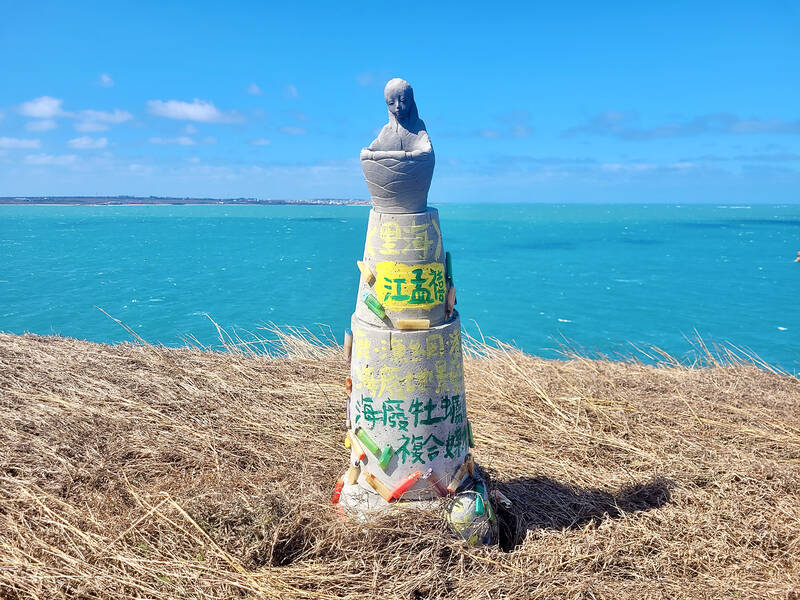
Photo: Tyler Cottenie
NIAOYU
Citou Wharf also serves as the departure point for Niaoyu, a slightly larger and more populous island. The highlights of a self-guided visit here are the larger fishing village and a beautiful swimming beach.
With a population about four times that of Yuanbeiyu, the harbor is much busier, and there are still active elementary and junior high schools here. You could easily fill an hour or two just exploring the multitude of narrow, meandering alleys that surround the harbor on three sides. There is also a restaurant, situated next to the park with exercise equipment.
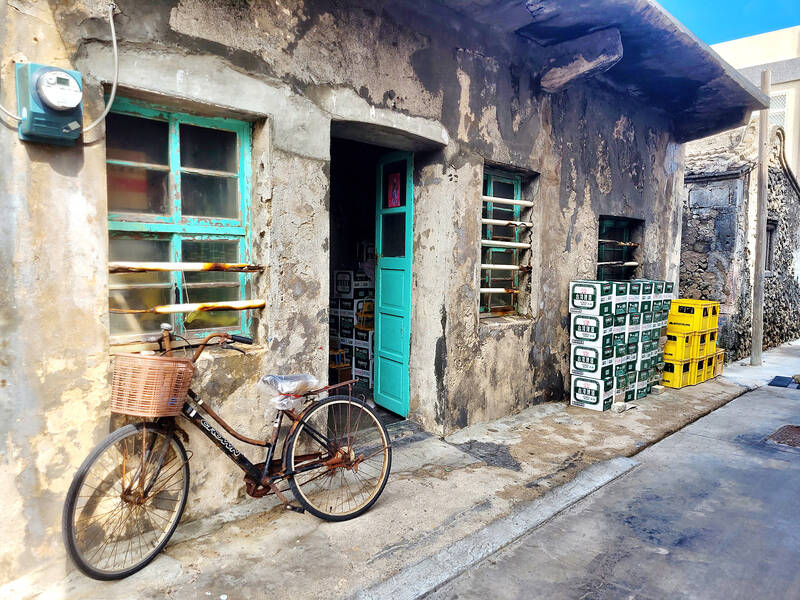
Photo: Tyler Cottenie
Over on the east side of the harbor is the beautiful junior high school. Colorful murals of underwater scenery adorn the walls in one corner of the property, while the remaining buildings are painted in an attractive white and blue, and come with a wide-open view of the ocean.
Beyond the school is an impressive public swimming beach. There is a wide expanse of light coral sand, and a collection of interconnected wooden pavilions and bamboo structures that throw ample shade. This is a great place to relax if you are spending several hours on the island.
Just to the south of the school is a large, seemingly empty expanse of gravel and weeds that contains a hidden gem for drone operators: the roads here have been laid out in the shape of a bird, which is only obvious from high in the air. This is a nod to the island’s name, which translates to “Bird Islet.”
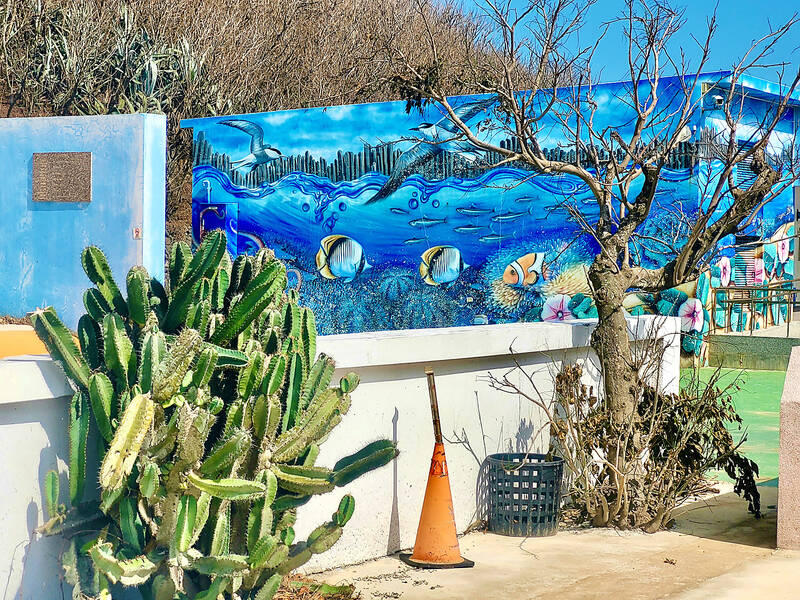
Photo: Tyler Cottenie
The highlands are worth a walk here, too. The developed path offers a good view of the surrounding ocean and passes by shady pavilions on its way to the far eastern tip of the island, where a small lighthouse stands. Unfortunately, the view on one side is tainted by the adjacent landfill, and the lighthouse itself is rather unimpressive, with drab exterior tiles reminiscent of an old Chunghwa Telecom building.
There is no path connecting the lighthouse to the coastal road on the north shore, but it is still easy to walk overland between the two (good shoes and long pants recommended). The north shore is where tour operators bring their guests during low tide to explore the intertidal zone’s marine life, and there is plenty of space here for self-guided tourists to visit at the same time.
DACANGYU
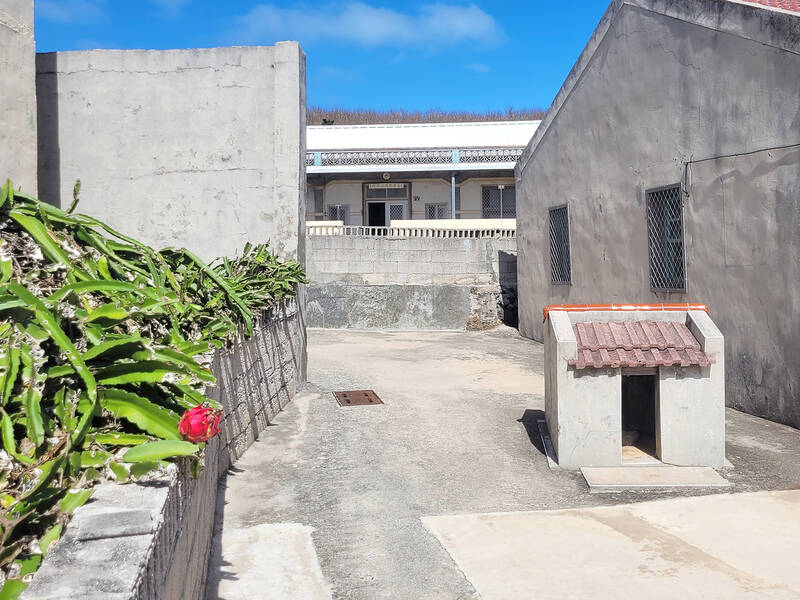
Photo: Tyler Cottenie
The island of Dacangyu is also known as the Pearl of the Inner Sea, as it is situated right in the middle of the body of water defined by the arc of the main Penghu islands. Although it is part of Baisha Township, ferry service to the island runs from Chongguang Harbor (重光碼頭) in Magong City (馬公市) for convenience.
The highlights of a visit here include the unique vantage point right in the middle of Penghu and the excellent swimming beach with associated facilities. Unlike the previous two islands, however, the walk around the island is unimpressive as there are no highlands with clifftop views.
The houses are all concentrated in a few rows right in front of the harbor. Though not as varied or numerous as on Niaoyu, the buildings here still present an interesting contrast of modern and traditional architecture.
The concrete road leading around the island is in good shape but is hardly worth your time. Painted concrete planters line the way, which were probably attractive when new, but they have since been neglected and are now cracking and overrun with cacti.
Do make a point of walking to the viewpoint in the middle of the island. This brightly painted raised platform gives you a 360-degree view of the surrounding islands, from Magong City all the way around to Siyu Township (西嶼鄉), including the Penghu Great Bridge.
On the west side of the village, there is an excellent swimming beach with a sandy bottom. Though not quite as beautiful as beaches like Shanshuei or Aimen on the main islands, it is still a fine place to spend an afternoon if the idea of exploring a more remote island at the same time appeals to you. There are free toilets and hot showers, as well as a restaurant with plenty of indoor and shady outdoor seating.
A local tour operator also offers activities like motorized water sports, paddling in transparent kayaks, fishing and tern viewing, along with meal options on Dacangyu. To book these, call 06-9275121 or add them on LINE with the following link: lin.ee/cIODBVw (Chinese only).

Aug. 4 to Aug. 10 When Coca-Cola finally pushed its way into Taiwan’s market in 1968, it allegedly vowed to wipe out its major domestic rival Hey Song within five years. But Hey Song, which began as a manual operation in a family cow shed in 1925, had proven its resilience, surviving numerous setbacks — including the loss of autonomy and nearly all its assets due to the Japanese colonial government’s wartime economic policy. By the 1960s, Hey Song had risen to the top of Taiwan’s beverage industry. This success was driven not only by president Chang Wen-chi’s

Last week, on the heels of the recall election that turned out so badly for Taiwan, came the news that US President Donald Trump had blocked the transit of President William Lai (賴清德) through the US on his way to Latin America. A few days later the international media reported that in June a scheduled visit by Minister of National Defense Wellington Koo (顧立雄) for high level meetings was canceled by the US after China’s President Xi Jinping (習近平) asked Trump to curb US engagement with Taiwan during a June phone call. The cancellation of Lai’s transit was a gaudy

From Godzilla’s fiery atomic breath to post-apocalyptic anime and harrowing depictions of radiation sickness, the influence of the nuclear bombings of Hiroshima and Nagasaki runs deep in Japanese popular culture. In the 80 years since the World War II attacks, stories of destruction and mutation have been fused with fears around natural disasters and, more recently, the Fukushima crisis. Classic manga and anime series Astro Boy is called “Mighty Atom” in Japanese, while city-leveling explosions loom large in other titles such as Akira, Neon Genesis Evangelion and Attack on Titan. “Living through tremendous pain” and overcoming trauma is a recurrent theme in Japan’s

As last month dawned, the Democratic Progressive Party (DPP) was in a good position. The recall campaigns had strong momentum, polling showed many Chinese Nationalist Party (KMT) lawmakers at risk of recall and even the KMT was bracing for losing seats while facing a tsunami of voter fraud investigations. Polling pointed to some of the recalls being a lock for victory. Though in most districts the majority was against recalling their lawmaker, among voters “definitely” planning to vote, there were double-digit margins in favor of recall in at least five districts, with three districts near or above 20 percent in